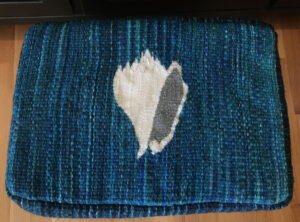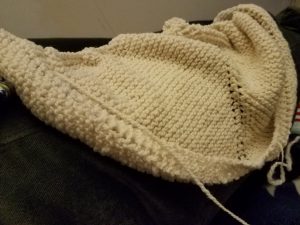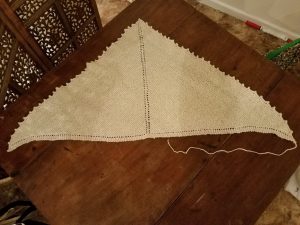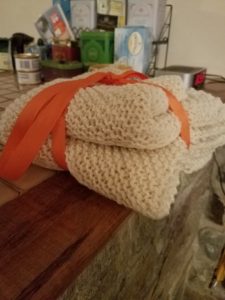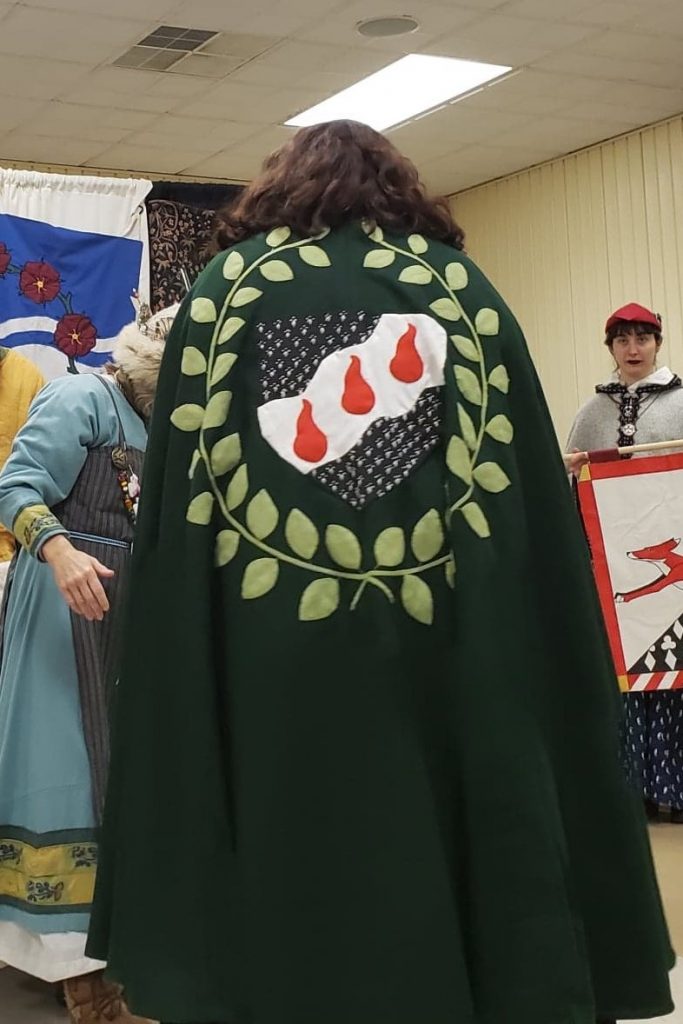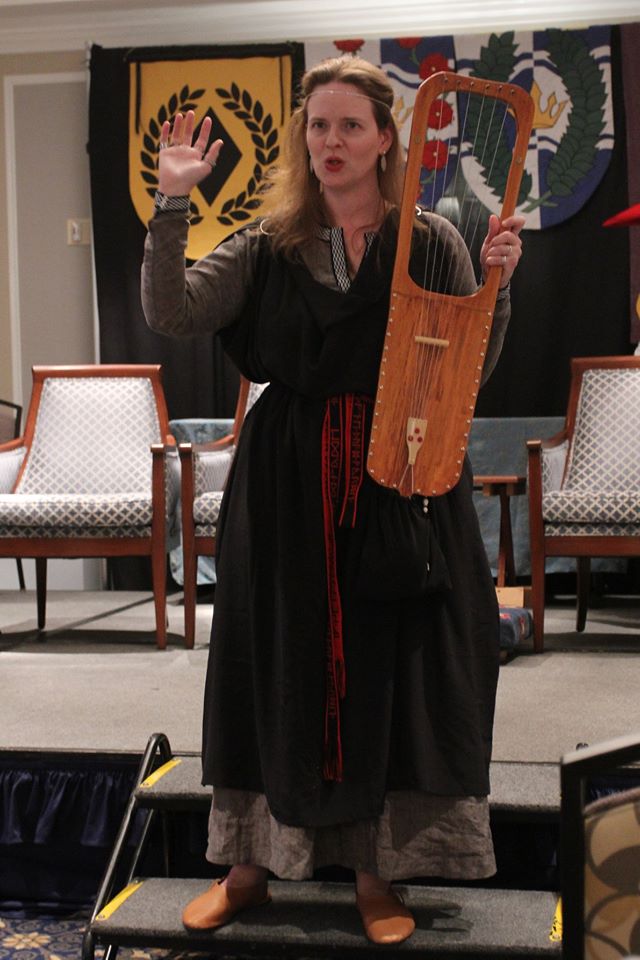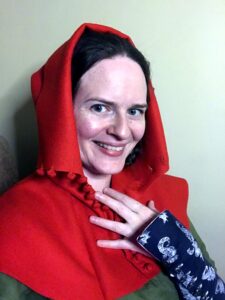
On occasion, I like to play around with 1350s-1425 England and France, and for New Year, I decided I wanted to record a reading of Gawain and the Green Knight in Middle English… but I didn’t have winter-appropriate garb. However, I had a little more of a yard of navy blue linen, and I had some leftover madder-red wool from Ysabeau’s cloak, so it was time to make some accessories!
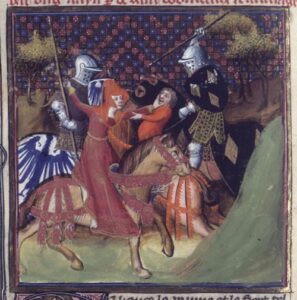
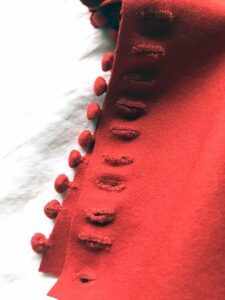
For the hood, I was inspired by a hood from a manuscript of the Prose Lancelot (Fonds Français 119, folio 354v). The woman wears a fashionable madder-red hood that projects forth from her face; I was a particular fan of the crazy-long liripipe. My pattern was modeled from a similar linen hood I made in a class several years ago, with adjustments based on advise from The Medieval Tailor’s Assistant by Sarah Thursfield. All seams were hand-sewn with wool. Since the wool is tightly fulled, the edges are left raw, and I didn’t flatfell the seams. The liripipe was a particular challenge, as it was a tight pieced tube; instead of having a lumpy end, I simply cut the tip and left it raw.
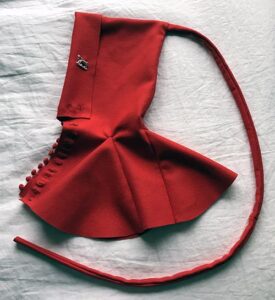
This was also my first time making self-stuffed buttons, which with the thick wool was a challenge. I used silk thread to initially gather the buttons, as silk was stronger than my wool thread (which liked to break), but I finished each button and sewed it on with wool.
I discovered through the process that I quite enjoy making buttonholes! These were also a learning experience (I don’t remember the last time I handsewed one — if ever?), but each was a delight, and by the end they were getting pretty even.
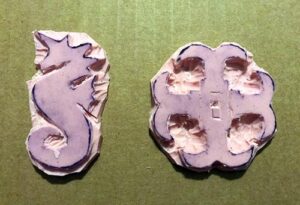
Other women in the same mansucript as my hood inspiration are wearing overdresses with short sleeves and long, knuckle-length undersleeves, which encouraged me to match the hood with some false sleeves. When I first bought this navy blue linen, I knew I wanted to make some Atlantian pride sleeves with spikes, so I also cut stamps for the first time! I used a Speedball lino cutting tool and carving block, which while not historically accurate are very user-friendly. I drew and cut an Atlantian Spike, and I also cut a millcross for my shire (for future usage); enjoying it way too much, I cut a second mirror-image Spike so I could print alternating Spikes.
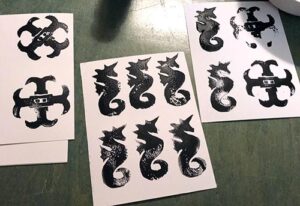
This was my first time printing fabric, and I have limited space, so there was some entertaining layouts on a bedroom floor with a yoga mat, towels, and way too many paper towels. I initially wanted to use silver paint, but the silver paint wasn’t pigmented enough to print clearly (and on a white linen test print ended up a dingy gray). After some trial and error, I landed on an undiluted white acrylic craft paint; I tried mixing the paint with a fabric medium, but it did not give a clear print. My printing wasn’t particularly consistent, but drastically improved in the process, and I’m looking forward to showing people where my printing experience began and ended while wearing these sleeves!
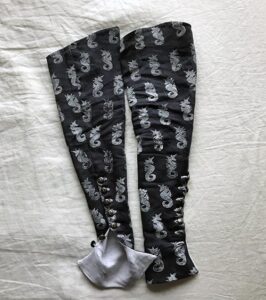 In making up the sleeves, I half-lined them just past the planned buttons so that I would have a contrast color when turning back the long cuffs. I cut them so that the cuffs just reach my knuckles, which is consistent with other sleeves I saw in the manuscript. The buttons are (appropriately) Spike buttons that were favors from previous A&S displays and competition, and I again enjoyed making buttonholes way too much. The linen was sewn and flatfelled with cotton, but the buttonholes were sewn with linen thread (the buttons were also sold on with linen). The final sleeves are skin-tight, and make me feel very fashionable!
In making up the sleeves, I half-lined them just past the planned buttons so that I would have a contrast color when turning back the long cuffs. I cut them so that the cuffs just reach my knuckles, which is consistent with other sleeves I saw in the manuscript. The buttons are (appropriately) Spike buttons that were favors from previous A&S displays and competition, and I again enjoyed making buttonholes way too much. The linen was sewn and flatfelled with cotton, but the buttonholes were sewn with linen thread (the buttons were also sold on with linen). The final sleeves are skin-tight, and make me feel very fashionable!
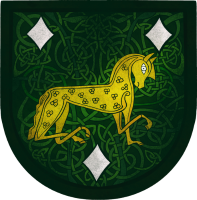
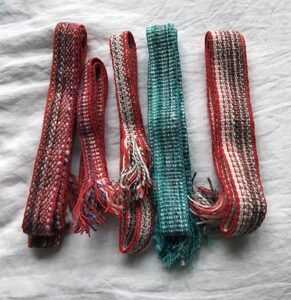
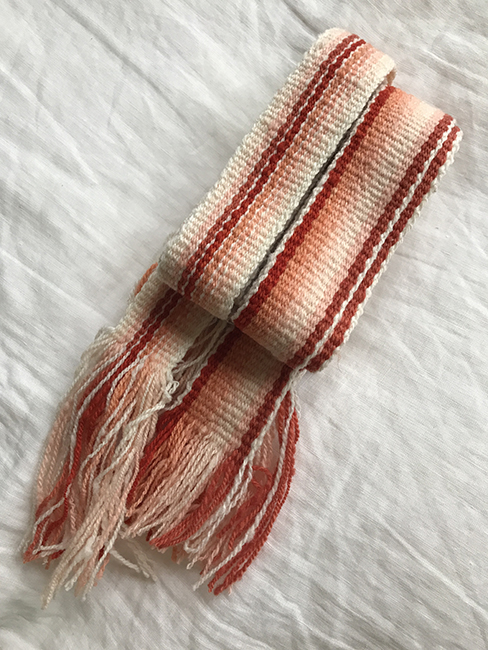
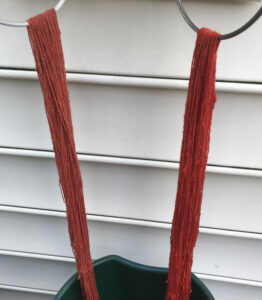
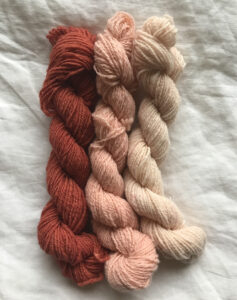
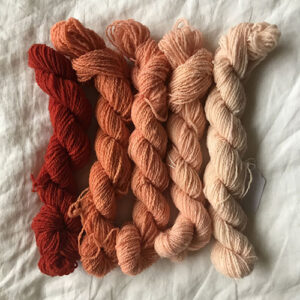
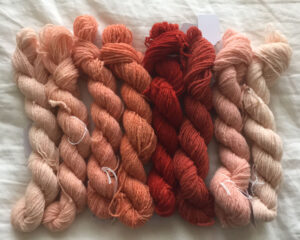
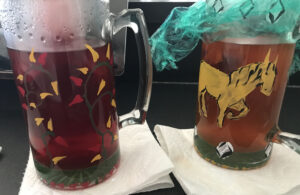
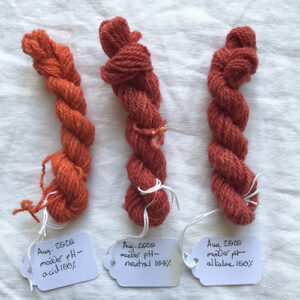
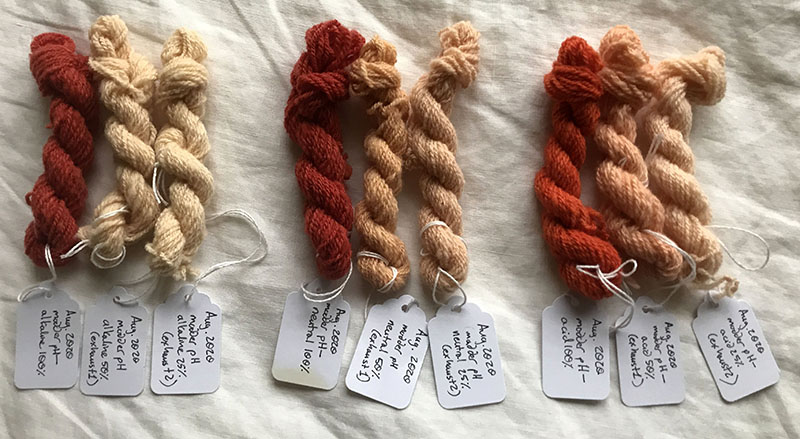
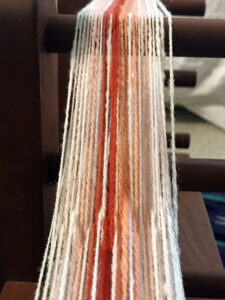
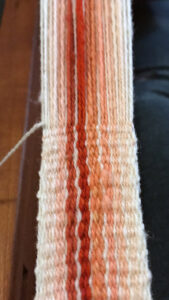
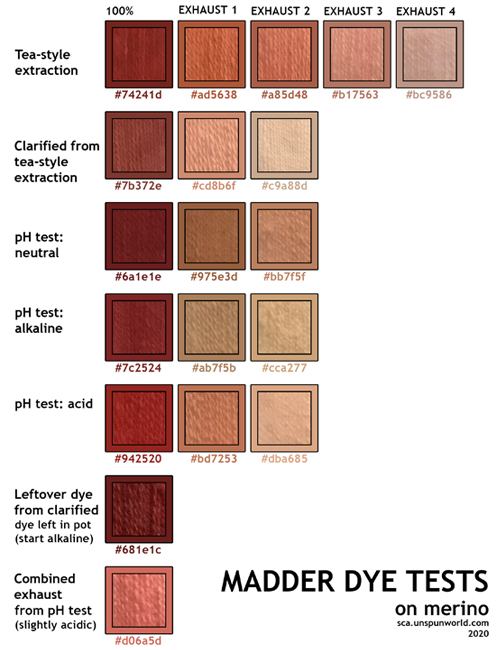
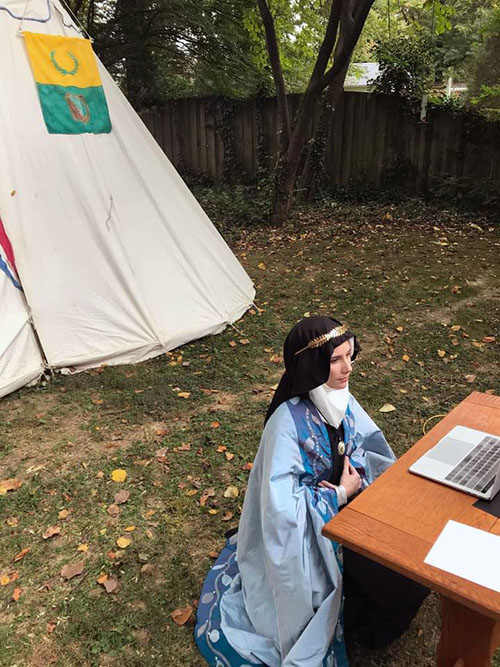
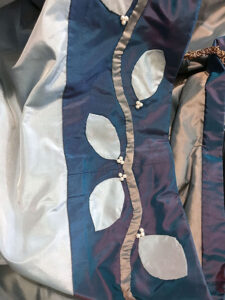
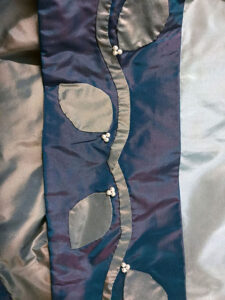
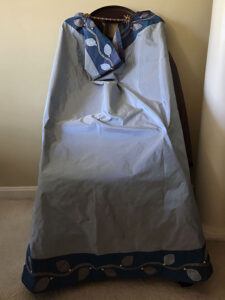

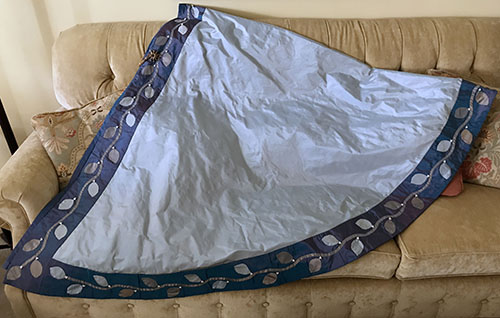
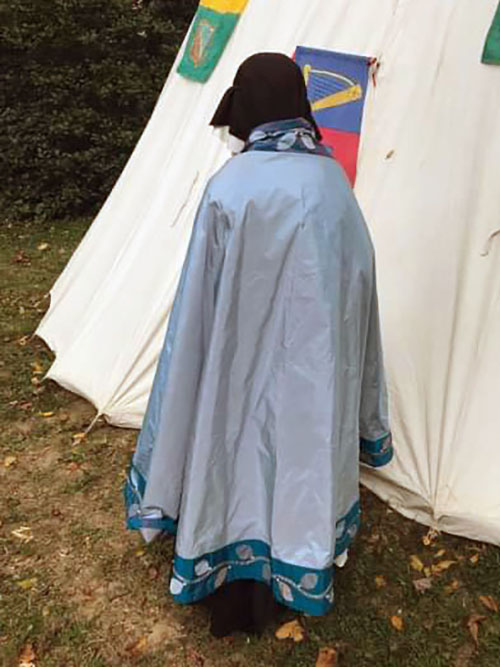
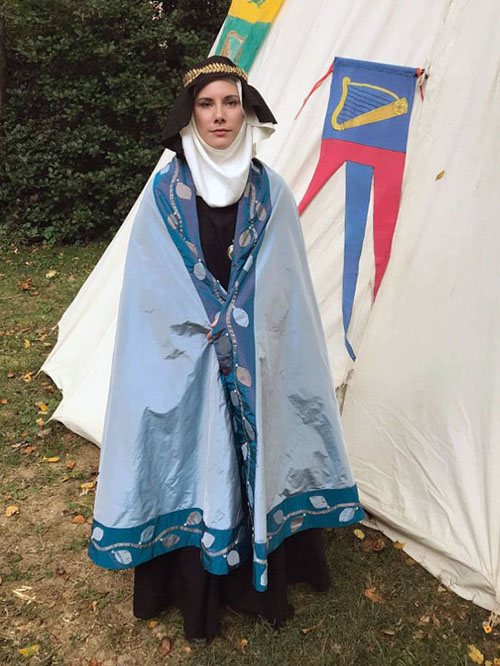
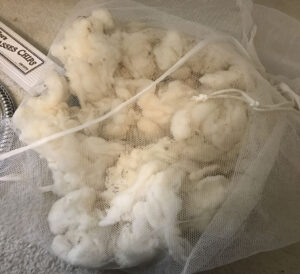
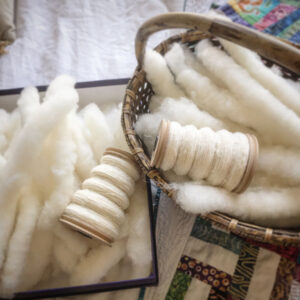
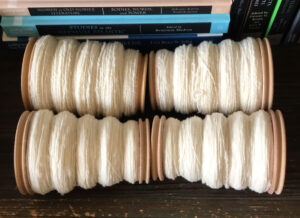
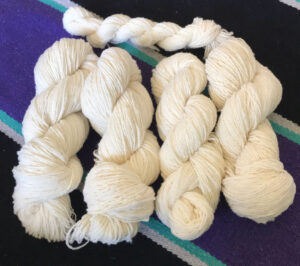
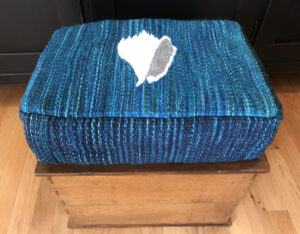
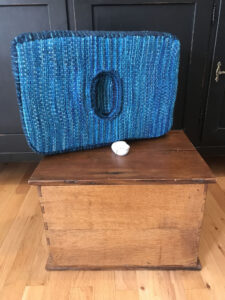 Therefore, I decided to weave a cushion for the box, with a cavity for the shell to fit into. Even if future bards decide not to use it as a seat, the cushion will allow other items to be stacked on top; it would also be a lovely place to set a guest of honor in a bardic circle.
Therefore, I decided to weave a cushion for the box, with a cavity for the shell to fit into. Even if future bards decide not to use it as a seat, the cushion will allow other items to be stacked on top; it would also be a lovely place to set a guest of honor in a bardic circle.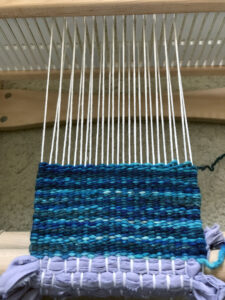 There’s a lot of memories in the yarn. The blue yarn was some of the first that I hand-dyed, in a flat in Scotland with vinegar and food coloring. I’ve had similar yarn in a sunny place for a while, so while I know it will fade, it won’t fade overly much. The grey yarn was some of the first I purchased as a crocheter (before I even learned to knit!), and the creamy-white was rescued from a charity shop in Scotland. The warp yarn is cotton that I purchased in a caravanserai in Istanbul. While it is difficult to tell in the pictures, the shell is outlined in silver, which I’m also currently using to embroider a banner. The entire cushion was woven using tapestry techniques on a rigid-heddle loom.
There’s a lot of memories in the yarn. The blue yarn was some of the first that I hand-dyed, in a flat in Scotland with vinegar and food coloring. I’ve had similar yarn in a sunny place for a while, so while I know it will fade, it won’t fade overly much. The grey yarn was some of the first I purchased as a crocheter (before I even learned to knit!), and the creamy-white was rescued from a charity shop in Scotland. The warp yarn is cotton that I purchased in a caravanserai in Istanbul. While it is difficult to tell in the pictures, the shell is outlined in silver, which I’m also currently using to embroider a banner. The entire cushion was woven using tapestry techniques on a rigid-heddle loom.